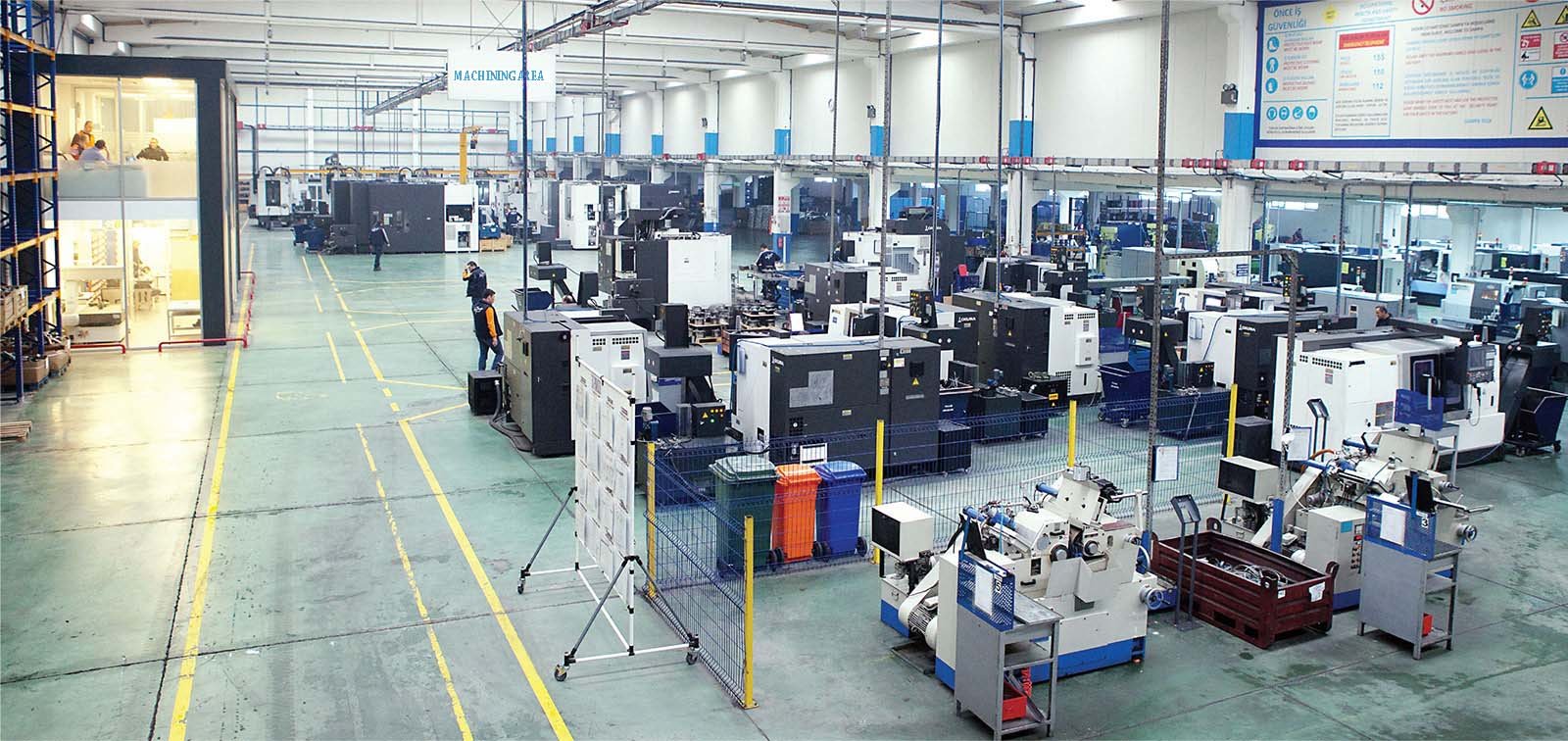Understanding the importance of precision machining is paramount in modern manufacturing and engineering. Precision machining stands as a cornerstone in the production of high-quality components across diverse industries, ranging from aerospace and automotive to electronics and medical devices.
At its core, precision machining embodies the meticulous art of fabricating intricate parts with exceptional accuracy and consistency, often within micrometer-level tolerances. This precision ensures that components seamlessly integrate into larger systems, guaranteeing optimal performance, reliability, and safety. Consequently, delving into the intricacies of precision machining unveils its profound impact on innovation, efficiency, and the advancement of technology.
Precision Machining: What Is It?
Precision machining is a sophisticated manufacturing process that involves the creation of highly accurate components with extremely tight tolerances. This meticulous process relies on computer numerical control (CNC) machines to automate the cutting, shaping, drilling, and finishing of raw materials such as metals, plastics, and composites.
At the heart of precision machining are CNC machines, which are equipped with advanced tools and operate based on precise instructions programmed into computer software. These machines can manipulate cutting tools along multiple axes, allowing for the creation of complex geometries and intricate designs with unparalleled accuracy.
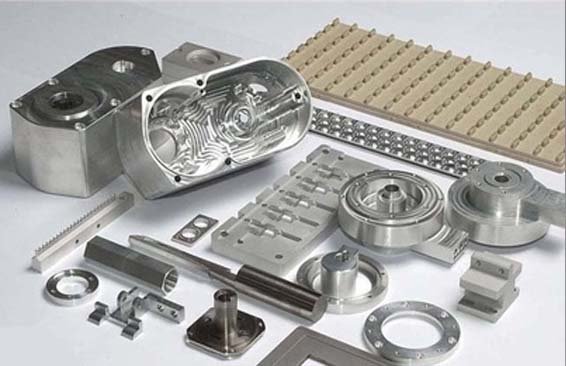
Types of in Precision Machining
There are various precision machining techniques employed to shape parts and products from a wide array of materials. Each method relies on advanced software and CNC (computer numerical control) equipment to orchestrate automated machining processes with exceptional precision.
CNC Machining
CNC machining encompasses a range of manufacturing processes such as milling, turning, grinding, and drilling, all directed by programmed commands. Machining centers, lathes, grinders, and CNC mills are common examples of CNC machines.
Skilled machinists develop programs using CAM (computer-aided manufacturing) software to guide machine movements along multiple axes, allowing for the creation of intricate 3D features through subtractive methods.
Multi-Axis CNC Machining
Multi-axis CNC machining involves machines equipped with four or more programmable axes. This configuration enables the shaping of complex 3D contours and curved geometries in a single setup. For instance, 5-axis milling manipulates parts along X, Y, and Z axes while simultaneously tilting and rotating, expanding machining capabilities for intricate components requiring smooth, flowing forms.
Swiss Machining
Swiss machining, also known as Swiss turning, is a specialized CNC method utilizing automatic lathes. Swiss CNC lathes feature a moving headstock and guide bush that provide centralized workpiece support while cutting across multiple axes.
This stability allows for high-precision small-diameter machining and faster cycle times through simultaneous front and backside machining. Precision parts in industries like medical, electronics, and aerospace benefit from Swiss CNC technology’s micro-scale accuracy.
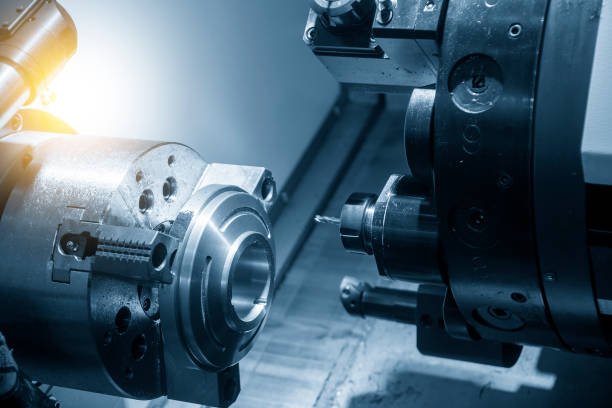
CNC Turning
CNC turning involves rotating the workpiece against a stationary cutting tool on a CNC lathe to machine diameters, contours, grooves, and faces. CAM programming controls straight and tapered diameters, as well as eccentric contours. CNC lathes offer versatile single-setup production, with live tooling options enabling additional milling, drilling, and threading operations without requiring a second machine.
CNC Drilling
CNC machining centers excel at accurately drilling holes with extreme precision, surpassing manual capabilities. Programmable hole-making operations include spotting, drilling, countersinking, boring, tapping, and reaming. CNC vertical mills ensure repeatability for production runs where precise location, alignment, and size consistency are crucial, such as in aerospace applications for final hole sizing and finish reaming to ensure interchangeability.
CNC Milling
Milling is a machining process that employs a high-speed rotary cutting tool to remove material from a stationary workpiece. It can be conducted on either automated or manual milling machines. The cutting tools used in milling machines come in various shapes, leading to different types of milling operations such as end milling, face milling, and knee milling.
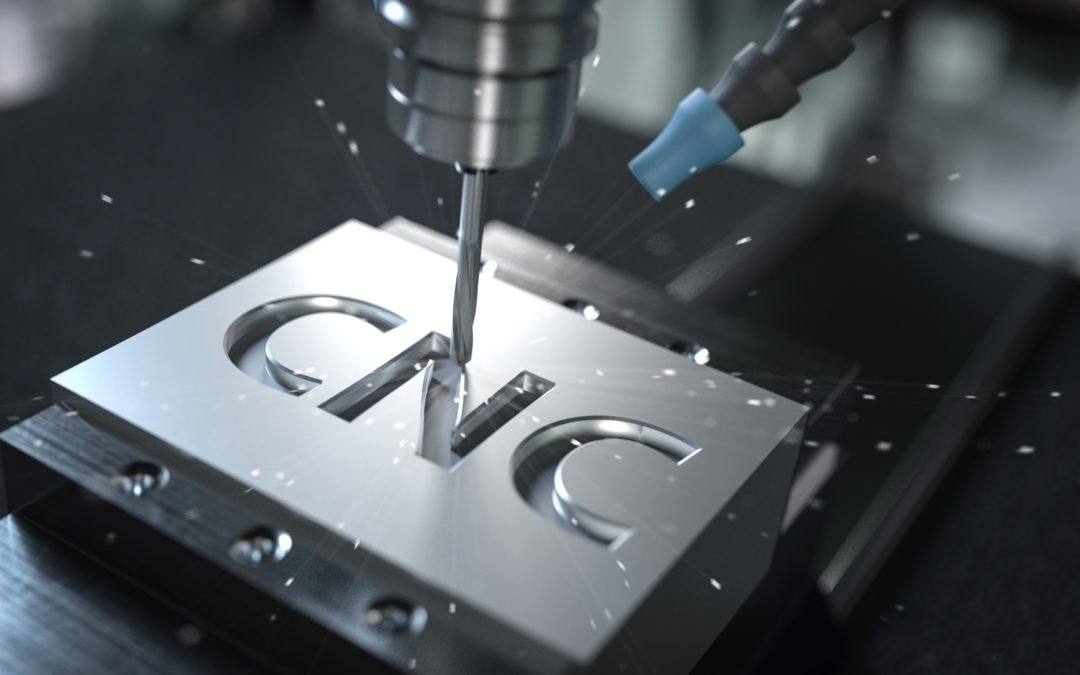
CNC Grinding
Grinding, on the other hand, serves as a secondary finishing process aimed at improving surface finish. It involves the use of an abrasive rotary disc known as a grinding wheel. Grinding processes can rectify defects on a workpiece caused by other machining operations. Surface grinders can also enhance the dimensional accuracy of a workpiece.
What Is the Process of Precision Machining?
Precision machining operates through a systematic process, leveraging computer numerical control (CNC) equipment and sophisticated software to sculpt materials with exceptional accuracy. This method follows a subtractive manufacturing approach, wherein material is selectively removed from a stock piece to craft customized parts and products.
Step 1: CAD Design
Commencing with a digital 3D computer-aided design (CAD) model of the desired part, this phase delineates precise specifications encompassing dimensions, tolerances, materials, and other pertinent factors crucial to the part’s function.
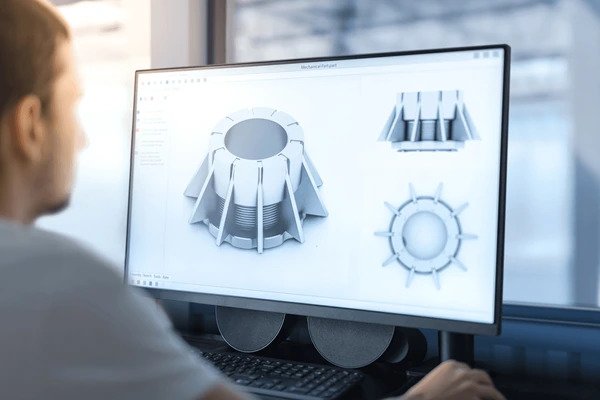
Step 2: CNC Programming
The CAD model undergoes conversion via computer-aided manufacturing (CAM) software, transmuting into numeric code replete with manufacturing directives for the CNC machine tool. This computer numerical control code orchestrates the machine’s motions.
Step 3: Fixturing
Selecting the appropriate stock material, it is meticulously fixtured within the CNC equipment using clamps, vices, or adhesive. Common materials like metals, plastics, glass, and ceramics are favored for their robustness and ability to maintain tight tolerances.
Step 4: Tool Setup
Activating the CNC program, the machinist initiates the manufacturing sequence, guiding machine movements, spindle speeds, tool selection, cutting depths, feed rates, and more. Multiple axes of motion, facilitated by technologies like milling, turning, electrical discharge machining (EDM), laser, and plasma cutting, shape the material.
Step 5: Machining
This pivotal stage witnesses the machine executing the programmed instructions, fashioning intricate parts with unparalleled precision and complexity.
Subsequent to machining, additional processes such as precision finishing, polishing, deburring, coating, heat treatment, or other secondary operations may be employed as necessitated by requirements before undergoing final inspection. The finished part must meet exacting form, fit, and functional criteria as per the original engineering design intent.
Step 6: Inspection
Quality validation ensues through a meticulous inspection process, incorporating manual measurement utilizing instruments like micrometers and calipers alongside automated techniques. This verifies dimensional accuracy vis-à-vis the initial specifications, permitting adjustments to achieve precise tolerances.
Materials Used in Precision Machining
Precision machining utilizes CNC technology and advanced machine tools to precisely shape a variety of materials, each with its own unique properties that influence manufacturing methods, quality, lead times, and costs.
Metals
Metals such as aluminum, steel, stainless steel, titanium, and nickel alloys are commonly machined due to their strength and durability, allowing for tight dimensional tolerances. Heat treatment can further enhance their hardness or other properties, though machining metals requires robust equipment, cutting tools, and cooling fluids.
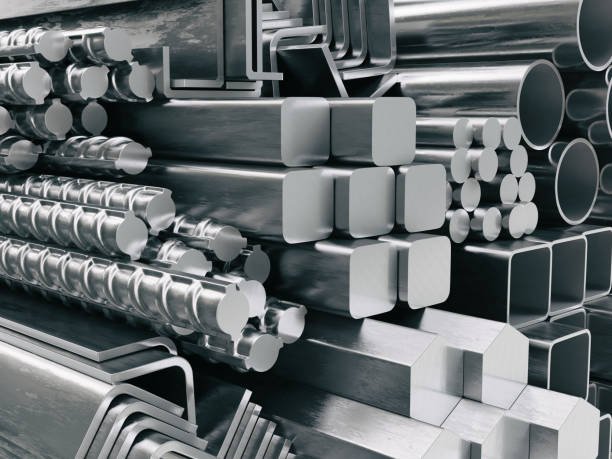
Plastics
Plastics and polymers like PVC, acrylic, nylon, and PEEK possess favorable electrical and thermal properties. Machining plastics is faster than metals and requires less demanding tooling, with the added benefit of precision detailing not achievable through injection molding. However, plastics generally exhibit lower strength, particularly in smaller sizes.
Glass
Glass offers excellent optical clarity and resistance to chemicals, heat, and electricity. Machining processes such as milling, drilling, and turning enable the production of precision components like lenses, prisms, and ceramic substrates. However, the use of diamond tooling, while yielding superior results, poses the risk of micro-cracks that may compromise component integrity.
Ceramics
Technical ceramics made from materials like aluminum oxide, silicon carbide, zirconium oxide, or silicon nitride boast extreme hardness and heat resistance. However, their brittleness limits geometries to simplified forms. Machining ceramics with diamond tools requires non-contact measurement and rigid fixturing to prevent component damage.
Composites
Composites, which combine two or more base materials, offer blends of beneficial properties. Examples include carbon fiber reinforced polymers (CFRPs) renowned for their high strength-to-weight ratios. However, machining composites with varying layers and tooling needs increases complexity, particularly with composites involving pre-impregnated fibers cured after machining.
Natural Materials
Materials such as wood, foams, waxes, and rubber are also amenable to precision machining. Utilizing high spindle speeds and specialized tooling, softer materials can achieve superior surface finishes. These organic materials find applications in graphics prototyping, patterns, architectural modeling, and biocompatible parts.
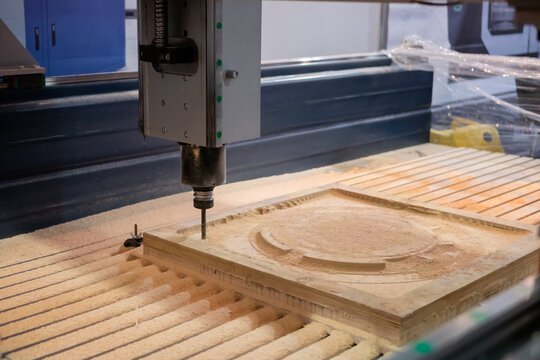
Applications of Precision Machining
Precision machining plays a crucial role in various industries, facilitating the accurate and repeatable production of intricate components. Some key applications include:
Aerospace Industry
Precision machining is essential for crafting components such as aircraft turbines, engine blocks, landing gear, and structural airframe components. These parts require ultra precision to balance weight, strength, and safety, often utilizing exotic materials like titanium and featuring complex 3D forms. Aerospace applications benefit from multi-axis CNC mills, lathes, and advanced inspection technologies.
Automotive
In the automotive industry, precision machined tooling, molds, and components like gears, shafts, cylinders, valves, and suspension parts are vital for mass production lines. Automotive applications typically favor hardened metals and may involve secondary treatments like induction hardening after initial CNC machining to enhance durability.
Medical
Precision machining is integral to producing surgical tooling, dental drill guides, joint replacement implants, and other medical devices. These applications demand biocompatible metals and plastics shaped into tiny sub-millimeter scales. Automated metrology and cleanrooms are often employed to augment the precision machining process in the medical field.
Optics
Precision machining is employed to create mirrors, lenses, prisms, and other optical components by contouring extremely smooth surfaces within micron tolerances. Materials such as glass, plastics, and ceramics serve as starting materials, with extensive fine grinding and polishing processes involved.
Electronics
From semiconductors to consumer devices, electronics packaging requires precision machined enclosures, connectors, and micro-scale features. Multistage machining, deburring, etching, and passivation are commonly used to refine electrical components and enable miniaturized designs.
Robotics
Precision machining is essential for crafting articulated robotic arms, joints, and end effectors used in high-mix assembly, materials handling, welding, and processing applications. Machined aluminum and steel components with tight clearances, along with hardened bushings, bearings, and precision gears, enable smooth and accurate motion control within limited spaces. We have precision machining products serving various industries.

Pros and Cons of Precision Machining
Pros:
- Precision and Accuracy: Precision machining enables the production of components with extremely tight tolerances, often reaching as low as +/- 0.005 mm. This level of precision allows for the creation of parts with micron-level accuracy, making it ideal for applications where precision is paramount, such as in the aerospace and medical industries.
- Complex Geometries: With the use of multi-axis milling and turning centers, precision machining can create intricate 3D contours, precision holes at various angles, and tiny features. This capability allows for the manufacturing of complex parts that would be challenging or impossible to produce using traditional machining methods.
- Material Versatility: Precision machining can work with a wide range of materials, including metals, plastics, composites, and technical ceramics. This versatility allows manufacturers to choose the most suitable material for their specific application, whether it requires strength, durability, chemical resistance, or other properties.
- Scalability: Precision machining is highly scalable, making it suitable for both small-scale production of prototypes and large-scale production runs. The same CNC programming can be used for both, allowing for efficient production and quick changeovers between jobs.
- Secondary Operations: Precision machining allows for a variety of secondary operations, such as deburring, coating, heat treating, and passivation. These additional processes can enhance the performance and functionality of machined components, adding value to the final product.
- Cost Effectiveness: While precision machining may require a significant initial investment in equipment and tools, it can be cost-effective for small to medium batch sizes. The elimination of hard tooling expenses and the ability to quickly switch between jobs can help offset the higher equipment costs.
Cons:
- Initial Investment: Precision machining requires substantial upfront investments in CNC machining centers, measuring equipment, and cutting tools. This initial investment can be prohibitive for startups and small businesses, limiting their ability to adopt precision machining technology.
- Dimensional Limits: Despite advancements in machining capabilities, machining slender parts with high length-to-diameter (L/D) ratios can still be challenging. There are also trade-offs between achieving minimum feature sizes and maintaining accuracy, particularly for extremely small or intricate components.
- Lead Times: Precision machining can have longer lead times compared to other manufacturing processes due to the time required for programming, fixturing, and trial processes. Additionally, the limited material removal rates inherent in machining can further extend lead times for high-volume production runs.
- Complex Programming: Precision machining requires skilled professionals to program CNC machines using complex CAM software. Factors such as tool selection, depth order, and feeds/speeds must be carefully considered to ensure optimal machining results. This complexity can lead to longer setup times and increased production costs.
>>> Read more: Top 10 Precision Machining Services Companies In Asia
Conclusion
Precision machining stands as a cornerstone in modern manufacturing, offering unparalleled accuracy, versatility, and scalability. Through the utilization of advanced CNC technology and meticulous attention to detail, precision machining enables the production of intricate components across various industries.
Its advantages, including micron-level precision, the ability to work with diverse materials, and cost-effectiveness for small to medium batch sizes, make it indispensable in sectors such as aerospace, automotive, medical, and electronics.
However, precision machining also presents challenges such as high initial investments, dimensional limits, longer lead times, and complex programming requirements. Despite these drawbacks, the benefits of precision machining, particularly in terms of engineered accuracy and part verification, validate its higher costs and solidify its position as a vital manufacturing process in today’s competitive landscape.

